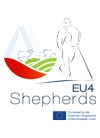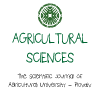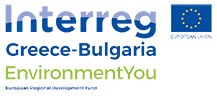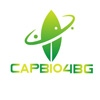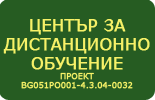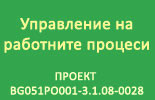Plant Genetics
|
Course title: |
Plant Genetics |
|
|
Course code: |
AFPLG |
|
|
ECTS: |
3 |
|
|
In-class hours |
Lectures: |
30 |
|
Laboratory work/Tutorials: |
30 |
|
|
Self-preparation hours |
Practical training: |
- |
|
Other: |
45 |
|
|
Total hours: |
75 |
|
|
Language: |
English |
|
|
Study cycle: |
BSc, Master, PhD |
|
|
Semester: |
Winter, summer |
|
|
Faculty: |
Faculty of Agronomy |
|
|
Name of the lecturer(s): |
Assoc. Prof. Bojin Bojinov, PhD |
|
|
Mode of delivery: |
Face-to-face |
|
|
Prerequisites: |
It is preferable for students to have minimal knowledge of general and molecular genetics, biochemistry, microbiology and plant breeding. |
|
|
Learning outcomes of the course unit: |
The course "Plant Genetics" gives students a bachelor's degree in basic knowledge of the most important theoretical issues in genetics. Students study the problems associated with the material basis of heredity, inheritance laws of the traits, types of variability of organisms, population genetic processes, molecular mechanisms of the processes, etc. The program targets after learning of these skills, students could effectively to use these skills later in their studies in other biological disciplines. The course "Plant Genetics" gives students concrete and precise knowledge of the most important issues that relate to agronomic practice with an emphasis on their general study as a genetic basis of theoretical training in other biological disciplines. To meet the objectives of this program is necessary for students to have sufficient knowledge of Botany, Biochemistry and Physiology of Plants. Knowledge in genetics appears basis for studying the disciplines Breeding and seed production, Plant-growing, Stock-breeding, Phytopathology, etc. |
|
|
Course contents: |
I. LECTURES – 30 hours (15 x 2 hours) 1. Subject and tasks of genetics. Milestones in the development of genetics, methods of studying genetic phenomena. Genetics and other natural sciences, the importance of genetics in the theory and practice. Development of ideas about heredity. Genetic material. Nucleic acids (DNA and RNA) - heralds of hereditary information. Primary and secondary structure of DNA and RNA. Denaturation, renaturation and hybridization of DNA. Cloning and sequencing of DNA. Nature and essence of the genetic material in prokaryotes and eukaryotes. Structure of bacterial nucleoid. Genetic aspects of DNA molecular structure eukaryotic organisms. 2. DNA replication - meaning and possible mechanisms. DNA replication in prokaryotic organisms. Replication of DNA in chromosomes and organelles of eukaryotes. 3. Analysis of the gene. Alelisam and criteria for alelisam. Cis-trans test. Mosaic structure of genes. Gene maps. Function of genes - a mechanism for the realization of genetic information - transcription and translation in prokaryotes and eukaryotes. Genetic code - the structure and characteristics. Code dictionary. Regulation of gene activity. Insertion elements and transposons. 4. Genetic basis of reproduction. Mitosis - cytological and genetic aspects. Disturbances in the normal manner. Genetic equivalence of somatic cells. Apomicsis. Apomict forms of reproduction. Practical application. Genetic aspects of meiosis. 5. Inheritance of traits in sexual hybridization. Hybridological analysis. Inheritance of one pair of alternative traits in complete and incomplete dominance. Reciprocal and top-cross crossing. Tetrad analysis. Free and independent inheritance of two or more pairs of alternative traits. Statistical nature of the disruption. Deviations from the typical ratios of disruptions. Genetic markers and their significance. 6. Inheritance and interactions between nonalelic genes. Complementary interaction of genes - principles phenotypic disruptions in various types of complementarity, evolutionary and applied aspects. Epistatic interaction. Inheritance of traits in epistatic genes action with or without its own phenotypic effect. 7. Genetics of quantitative traits. Qualitative and quantitative traits. Additive effect of genes. Polymery and transgression. Specifications for conducting genetic analysis of quantitative traits. Modifying genes action. Multiple genes action - pleyotropy. 8. Linked inheritance of the traits and crossing-over. Classical chromosome theory. Coupling of genes and related inheritance. Crossing-over - cytological mechanisms. Crossover species. Interference. Factors influencing the crossing-over. Chromosome maps. Molecular mechanisms of recombination. 9. Genetics of sex. Types of sexual differentiation. Chromosomal predetermination of sex. Sex chromosomes and sexual chromatin. Heterogamety of the male and female sex. Sex-related inheritance. Inheritance in inseparability of sex chromosomes. Balance and physiological theory of sex. Bisexuality, intersexuality, ginandromorfizm. Genes changing the sex. Differentiation of sex during ontogenetic development. Sex determination in plants. Inheritance of limited and dependent on sex traits. Practical use of sex-related inheritance. 10. Cytoplasmic heredity - nature. Methods for detecting cytoplasmic heredity. Plastid and mitochondrial genes. Citoplasmic male sterility in plants. Genetic bases of heterosis. Incuht and inbriding depression. Heterosis events in plants. Genetic nature of heterosis. Hypotheses for explication of heterosis events. Problems associated with its use. 11. Genetic basis of remote hybridization. Species as a genetic system. Non-crossing and methods to overcome her nature of inheritance in remote hybridization. Sterility of remote hybrids and her overcoming. Synthesis and re-synthesis of species. 12. Variability of organisms. Hereditary and nonhereditary variability. Modification variability. Rate of reaction. Modifications and the problem of inheritance of acquired traits. Mutational theory of Hugo de Vries. General characteristics and classification of mutations. Mutagenic factors. Effects of their action. Origin, expression and confirmation of mutations. Methods for reporting of mutations. Possibility of increasing the frequency and direction of mutations. 13. Types of mutations. Gene and chromosomal mutations - hypotheses about their occurrence and methods of reporting. Positional effect. Genomic mutations. Autopoliploidy and alopoliploidy. Haploidy - methods for obtaining of haploids. Aneuploidy - types of aneuploidy. Chromosome substitutions and their use in breeding. 14. Genetic processes in the population. Nature of the problem. The population of the species in the system. Genetic structure of populations in the self- and becross-pollinated plants. Genetic equilibrium of panmict population. Law of Hardy-Weinberg. Factors modifying the genetic structure of panmict population. 15. Nature of genetic engineering. Isolation of genes and their including in the vector. The current state of the problem of genetic engineering in plants. Cell engineering. Somatic cell hybridization.
II. LABORATORY PRACTICAL WORK – 24 hours (12 x 2 hours) 1. Methods for preparation of interim and permanent microscopic preparations for cytogenetic studies. 2. Genetic bases of mitosis. 3. Karyological and karyotype analysis in crops. 4. Genetic bases of meiosis. 5. Hybridological analysis. Mono- and dihybrid crossings in full and incomplete dominance. 6. Polihybrid crossing. Results of statistical processing of hiyridological analysis. Method "X2" (chi) square. 7. Genetic analysis in epistatic and complementary gene interactions. 8. Genetic analysis of quantitative traits. Polymery and transgression. 9. Inheritance of sex-related and limited by the sex traits. 10. Inheritance of traits in skachenost of linked genes. Crossing-over. 11. Identification of chromosomal aberrations by metaphase and anaphase analysis. 12. Cytological and morphological characteristics of polyploid plants.
III. EDUCATIONAL FILMS, TESTS AND WORKSHOPS – 6 hours (3 x 2 hours) 1. A first test conducted to check the acquired knowledge and presentation of the educational film “In vitro systems for regeneration of plants”. 2. A second test conducted for verification of acquired knowledge and presentation of the educational films – “PCR techniques” and “Bacterial transformation”. 3. Discussions and presentations of student’s referees developed on predefined themes. |
|
|
Recommended or required reading: |
1. Делчев И., С. Петкова, Г. Рукмански. - Генетика. Изд. “Земиздат”, ІІ издание, 1996. 2. Делчев И., С. Петкова, Г. Рукмански. - Генетика. Изд. къща "Дионисий", ІІІ издание, 1999. 3. Светлева, Д., А. Стефанова. - Учебно пособие по генетика. Академично издателство на ВСИ, 1999, 173 стр. 4. Стефанова, А., Д. Светлева. - Основни принципи в генетиката. Тестове по генетика. Академично издателство на Аграрния университет, Пловдив, 2002, 157 стр. 5. Светлева, Д., А. Стефанова, Б. Божинов. – Учебно ръководство по генетика. Академично издателство на Аграрния университет, Пловдив, 2004, 171 стр. 6. 6. Франциско Айала и Джон Кигер - Съвременна генетика. Изд. “Земиздат”, София, 1987. 7. Светлева, Д. - Ръководство по растителни биотехнологии. Втора част: Индуцирана in vitro мутагенеза при растенията. Академично издателство на Аграрния университет, Пловдив, 2002, стр. 75-139. 8. Wеavеr R.F., P. W. Hedrick - Basic Genetics. WCB, 1991. 9. Hartl D. L., E. W. Yones - Essential Genetics. Jones and Bartlett Publishers, 1999. 10. Falconer D.S. – Introduction to quantitative genetics. 1981, 340 pp. 11. Becker W.A. – Manual of quantitative genetics. 1984, 190 pp. 12. Brown T.A. – Genetics: a molecular approach. 1992, 467 pp. 13. Conner J.K., D.L. Hartl– A primer of ecological genetics. 2004, 304 pp. 14. Klug W.S., M.R. Cummings – Essentials of genetics. 1999, 567 pp. 15. Klug W.S., M.R. Cummings – Concepts of genetics. 2003, 693 pp. 16. Kearsey M.J., H.S. Pooni – The genetical analysis of quantitative traits. 1998, 381 pp. 17. Brown A.H.D., M.T. Clegg, A.L. Kahler, B.S. Weir – Plant population genetics, breeding and genetic resources. 1990, 449 pp. 18. Rieger R., A. Michaelis, M.M. Green – Glossary of genetics and cytogenetics. Classical and molecular. 1976, 647 pp. 19. Elrod S., W. Stansfield, G. Bhowmik – Genetics. The McGraw Hill Companies, 2002. |
|
|
Planned learning activities and teaching methods: |
Teaching methods will be presented by: ® Monological explanation (lectures with presentations), ® Dialogue methods (conversations and discussions) The course includes the following mandatory components: lectures, laboratory work, seminars, as well as student self-preparation. The lectures and laboratory practical works are supported by extensive literature and material basis. The lectures are delivered by means of PowerPoint presentations. The seminars take the form of a discussion between the students and the lecturer, with reference to pre-selected topics. The results will be published no later than 2 days after the exam. |
|
|
Assessment methods and criteria: |
The course ends with a written examination. The latter includes a pre-defined set of questions, which is drawn from the course material. |
|
 - Events on the occasion of the 80th anniversary of AU
- Events on the occasion of the 80th anniversary of AU

